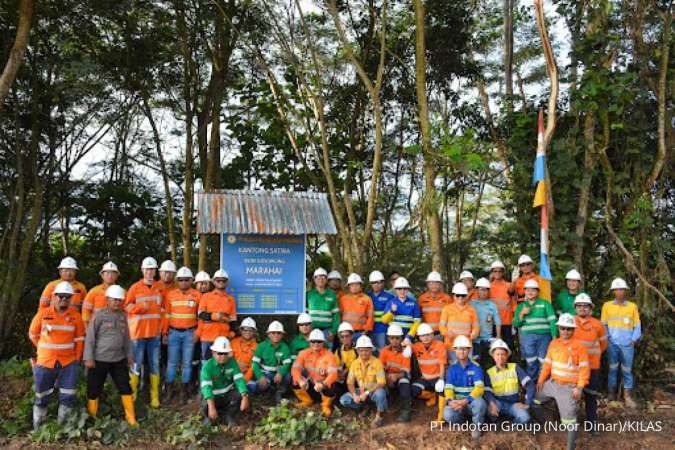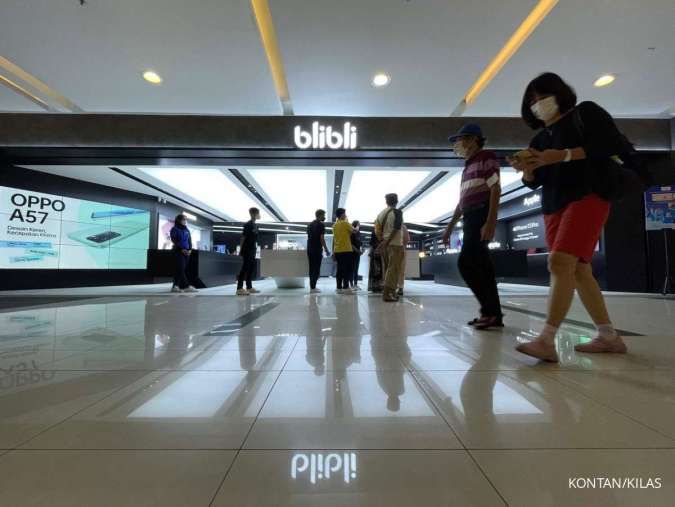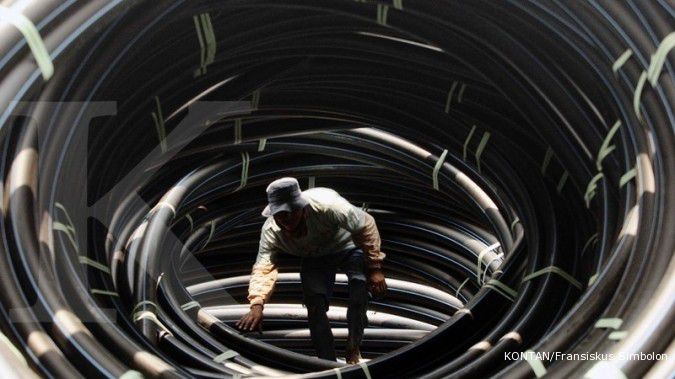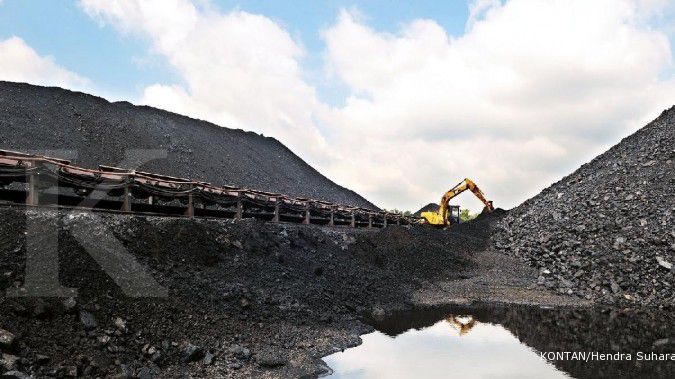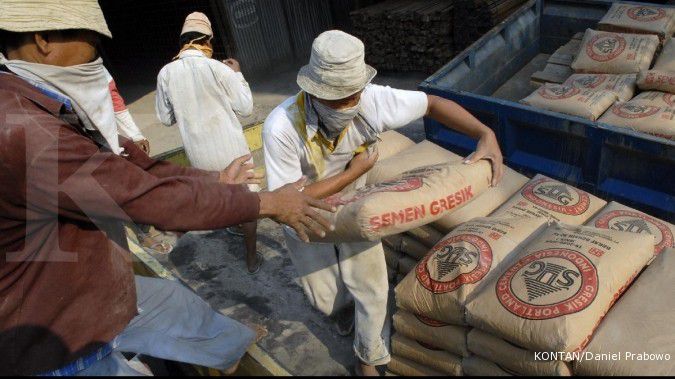JAKARTA. State-owned electricity company PT Perusahaan Listrik Negara (PLN) reported electricity sales growth in the first quarter of the year, although supply constraints still disrupted distribution in some areas.As much as 46.81 terawatt hour (TWh) in electricity were sold during the January to March period, a 7.58 percent increase from 43.51 TWh in the same period a year earlier, according to data from the company.Of the total figure, 35.74 TWh were sold in the Java-Bali area in the first three months of this year, or up by 7.14 percent in comparison with the same period last year.Sales to the eastern part of Indonesia grew the highest, at 13.58 percent, to 4.56 TWh, driven by demand from the industry segment.Meanwhile, electricity sales in Sumatra touched 6.51 TWh in the first quarter of the year, or 6.03 percent higher than the same period a year ago. Despite the increase, figures showed that electricity consumption by the industry segment in Sumatra was 4.7 percent lower during the first quarter.“The lower consumption in Sumatra is likely due to a limited supply,” PLN senior corporate communication manager Bambang Dwiyanto said.The company is struggling to end blackouts in Sumatra, particularly in the northern part of the island, where capacity can no longer meet growing demand. Measures have been taken to resolve the issue, including by incorporating the use of power generators. PLN also expects additional supply from ongoing power plant projects.PLN has set a target to see electricity sales growth of 7.5 percent this year, after reporting a 6.93 percent increase last year.Still, the sales increase could not be translated into higher profits, as the company had suffered from the weakening rupiah exchange rate.The rupiah was Asia’s worst-performing currency last year as it lost more than 26 percent against the US dollar, resulting in currency losses for local companies that trade using foreign currencies. However, a boost in PLN’s income is expected this year following the government’s plan to increase electricity tariffs starting May 1. The government earlier this year secured approval from House of Representatives Commission VII overseeing energy and natural mineral resources to increase electricity tariffs for major industrial consumers, gradually every two months until the end of this year.A bimonthly increase of 8.6 percent is slated to be applied for companies that are listed on the local stock exchange and consume more than 200 kilovolt amperes (kVA) of electricity, or also known as Group I3. Meanwhile, a 13.3 percent bi-monthly electricity tariff increase will be imposed on industries that use up to 30,000 kVA, known as Group I4.The total increase will be equal to a total 38.9 percent for Group I3 and 64.7 percent for Group I4 by year-end. The electricity tariff increase is aimed at cutting energy subsidies, which have been weighing down the state budget.Apart from increases for Group I3 and I4, the government is also planning to implement an automatic tariff adjustment for another four categories of power users. The four groups consist of luxury households that consume more than 6,600 volt-amperes, businesses using between 6,600 VA and 200 kVA, businesses consuming more than 200 kVA and government buildings that use between 6,600 VA and 200 kVA.The electricity-tariff hikes will save Rp 10.96 trillion (US$951 million) from Group I3, Rp 7.57 trillion from Group I4 and Rp 2 trillion from other electricity consumers, including households and government buildings.The director general for electricity at the Energy and Mineral Resources Ministry, Jarman, has said that the government plans to gradually revoke all electricity subsidies disbursed except for the poor.“Currently, some groups continue to enjoy subsidies, including Group I3, which are non-listed companies. We will adjust the tariffs gradually,” Jarman said.
PLN enjoys higher electricity sales in Q1
JAKARTA. State-owned electricity company PT Perusahaan Listrik Negara (PLN) reported electricity sales growth in the first quarter of the year, although supply constraints still disrupted distribution in some areas.As much as 46.81 terawatt hour (TWh) in electricity were sold during the January to March period, a 7.58 percent increase from 43.51 TWh in the same period a year earlier, according to data from the company.Of the total figure, 35.74 TWh were sold in the Java-Bali area in the first three months of this year, or up by 7.14 percent in comparison with the same period last year.Sales to the eastern part of Indonesia grew the highest, at 13.58 percent, to 4.56 TWh, driven by demand from the industry segment.Meanwhile, electricity sales in Sumatra touched 6.51 TWh in the first quarter of the year, or 6.03 percent higher than the same period a year ago. Despite the increase, figures showed that electricity consumption by the industry segment in Sumatra was 4.7 percent lower during the first quarter.“The lower consumption in Sumatra is likely due to a limited supply,” PLN senior corporate communication manager Bambang Dwiyanto said.The company is struggling to end blackouts in Sumatra, particularly in the northern part of the island, where capacity can no longer meet growing demand. Measures have been taken to resolve the issue, including by incorporating the use of power generators. PLN also expects additional supply from ongoing power plant projects.PLN has set a target to see electricity sales growth of 7.5 percent this year, after reporting a 6.93 percent increase last year.Still, the sales increase could not be translated into higher profits, as the company had suffered from the weakening rupiah exchange rate.The rupiah was Asia’s worst-performing currency last year as it lost more than 26 percent against the US dollar, resulting in currency losses for local companies that trade using foreign currencies. However, a boost in PLN’s income is expected this year following the government’s plan to increase electricity tariffs starting May 1. The government earlier this year secured approval from House of Representatives Commission VII overseeing energy and natural mineral resources to increase electricity tariffs for major industrial consumers, gradually every two months until the end of this year.A bimonthly increase of 8.6 percent is slated to be applied for companies that are listed on the local stock exchange and consume more than 200 kilovolt amperes (kVA) of electricity, or also known as Group I3. Meanwhile, a 13.3 percent bi-monthly electricity tariff increase will be imposed on industries that use up to 30,000 kVA, known as Group I4.The total increase will be equal to a total 38.9 percent for Group I3 and 64.7 percent for Group I4 by year-end. The electricity tariff increase is aimed at cutting energy subsidies, which have been weighing down the state budget.Apart from increases for Group I3 and I4, the government is also planning to implement an automatic tariff adjustment for another four categories of power users. The four groups consist of luxury households that consume more than 6,600 volt-amperes, businesses using between 6,600 VA and 200 kVA, businesses consuming more than 200 kVA and government buildings that use between 6,600 VA and 200 kVA.The electricity-tariff hikes will save Rp 10.96 trillion (US$951 million) from Group I3, Rp 7.57 trillion from Group I4 and Rp 2 trillion from other electricity consumers, including households and government buildings.The director general for electricity at the Energy and Mineral Resources Ministry, Jarman, has said that the government plans to gradually revoke all electricity subsidies disbursed except for the poor.“Currently, some groups continue to enjoy subsidies, including Group I3, which are non-listed companies. We will adjust the tariffs gradually,” Jarman said.

